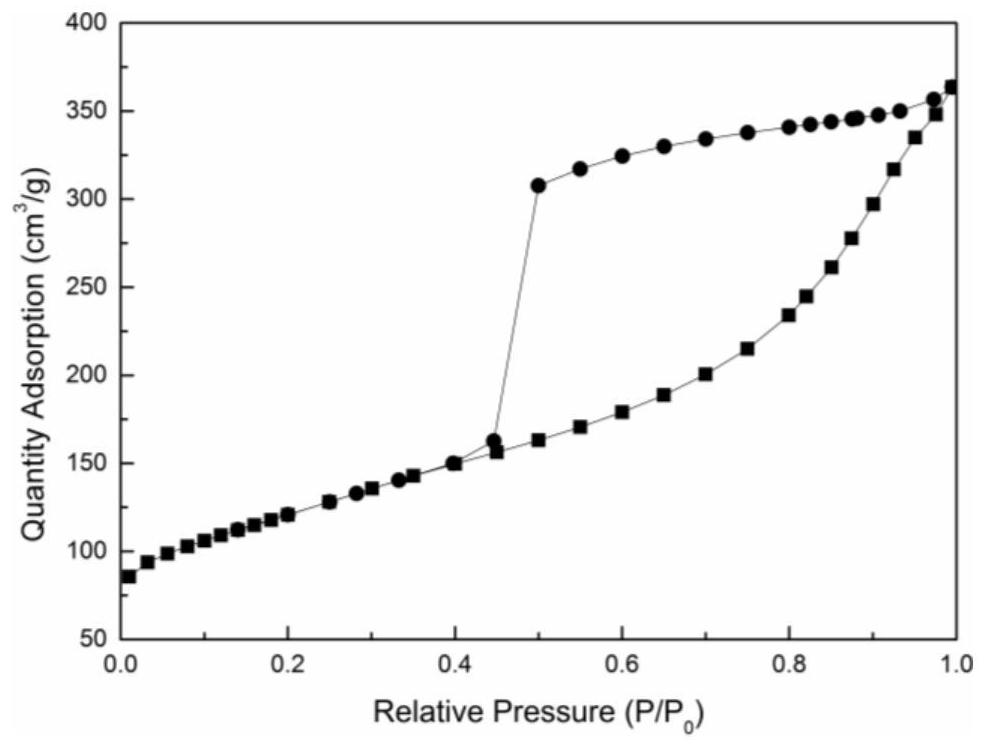Application of a carbon-based catalyst in the catalytic hydrogenation of p-nitrophenol
A technology of nitrophenol catalysis and carbon-based catalysts, which is applied in the direction of catalyst activation/preparation, physical/chemical process catalysts, metal/metal oxide/metal hydroxide catalysts, etc., and can solve problems involving organic reagents or acid-base conditions, The reaction process is complicated and lengthy, and the recycling performance is poor, so as to achieve the effect of abundant raw materials, cheap and easy-to-obtain raw materials, and good catalytic activity
- Summary
- Abstract
- Description
- Claims
- Application Information
AI Technical Summary
Problems solved by technology
Method used
Image
Examples
Embodiment 1
[0024] Take commercially purchased microcrystalline cellulose (MCC) as raw material, weigh 8g, put it into a polytetrafluoroethylene-lined reaction kettle with a volume of 100ml, and put a certain volume of deionized water as a solvent to ensure that the volume of the solution is compared with the volume of the kettle. 8:10, choose nickel acetate as the nickel source for doping, the mass ratio of nickel acetate to microcrystalline cellulose is 2:10, mix well and put the reaction kettle into a box-type incubator, and raise the temperature to the target temperature of 230°C. After constant temperature for 12 hours, cool down to room temperature, filter to obtain a dark brown solid, wash with deionized water, absolute ethanol, and acetone three times respectively, dry and grind. The nickel-doped carbon-based catalyst precursor obtained above was put into a tubular calciner, and under the protection of nitrogen atmosphere, the temperature was raised to 900°C at 5°C / min and kept at ...
Embodiment 2
[0027] Take commercially purchased microcrystalline cellulose (MCC) as raw material, weigh 5g, put it into a polytetrafluoroethylene-lined reactor with a volume of 100ml, and put a certain volume of deionized water as a solvent to ensure that the volume of the solution is proportional to the volume of the kettle. It is 6:10, choose ferroferric oxide as the iron source of doping, the mass ratio of ferroferric oxide and microcrystalline cellulose is 1:4, after mixing evenly, put the reaction kettle into a box-type incubator, and heat up to the target The temperature is 220°C, keep the temperature for 14 hours, cool down to room temperature, filter to obtain a dark brown solid, wash with deionized water, absolute ethanol, and acetone three times respectively, dry and grind. The iron-doped carbon-based catalyst precursor obtained above was put into a tubular calciner, and under the protection of nitrogen atmosphere, the temperature was raised to 950°C at 5°C / min and kept at a const...
PUM
| Property | Measurement | Unit |
|---|---|---|
| particle size | aaaaa | aaaaa |
| particle diameter | aaaaa | aaaaa |
| particle size | aaaaa | aaaaa |
Abstract
Description
Claims
Application Information
 Login to View More
Login to View More - R&D
- Intellectual Property
- Life Sciences
- Materials
- Tech Scout
- Unparalleled Data Quality
- Higher Quality Content
- 60% Fewer Hallucinations
Browse by: Latest US Patents, China's latest patents, Technical Efficacy Thesaurus, Application Domain, Technology Topic, Popular Technical Reports.
© 2025 PatSnap. All rights reserved.Legal|Privacy policy|Modern Slavery Act Transparency Statement|Sitemap|About US| Contact US: help@patsnap.com



